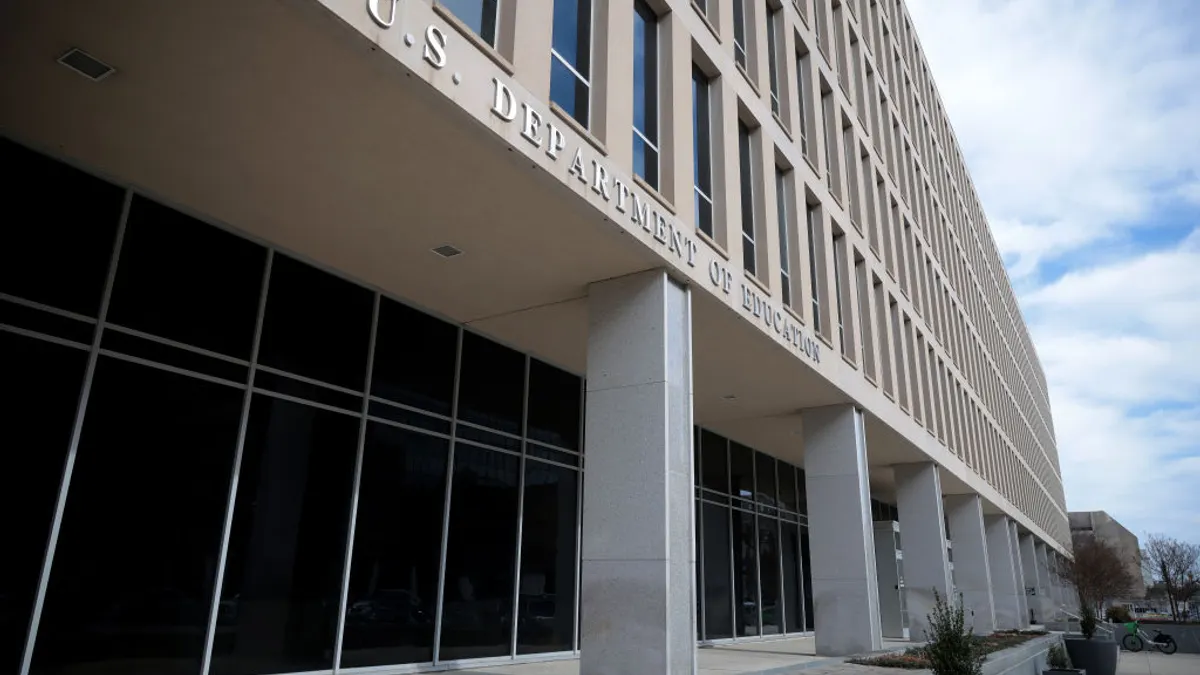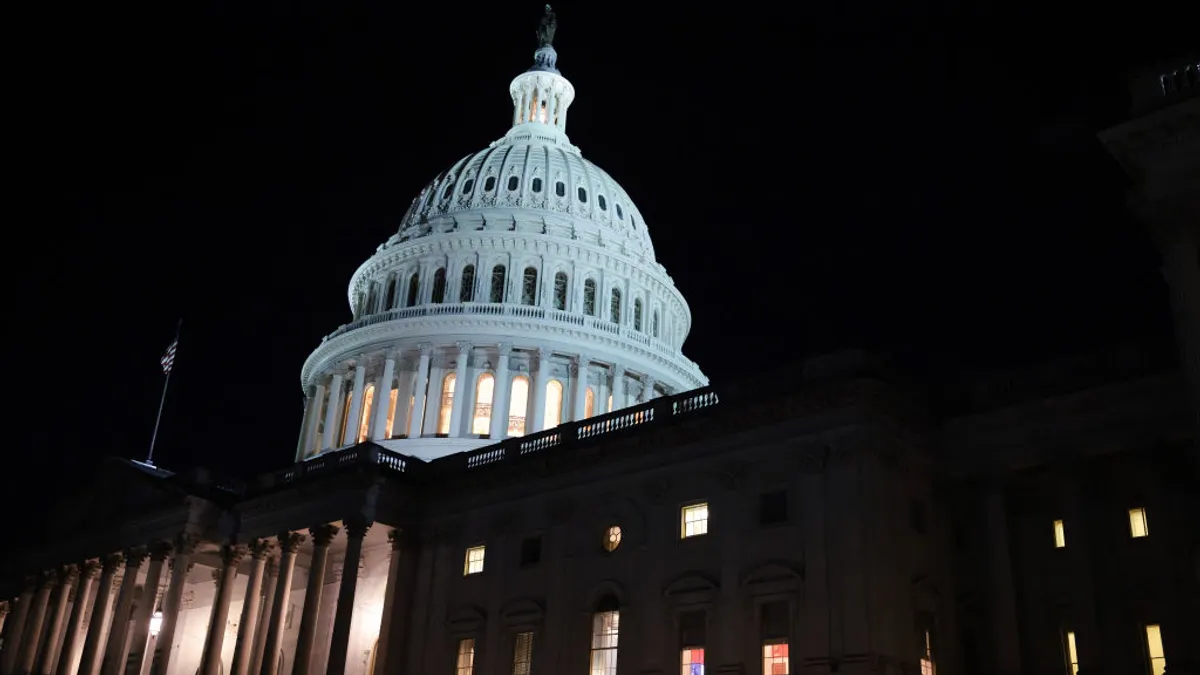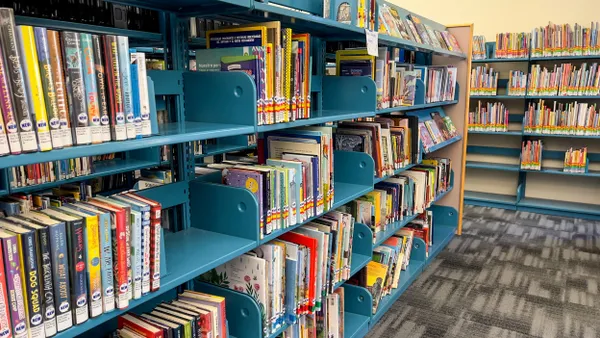Most teachers take part in some type of professional learning community (PLC), but how that time is spent can range from conducting a book study to creating assessments to dealing with discipline matters.
Not enough PLCs, however, are organized to work with curriculum materials in a way that improves learning for students, Stephanie Hirsh, executive director of Learning Forward, a membership organization for those who lead professional development (PD), said in a recent interview.
She pointed to a 2014 report from the Bill and Melinda Gates Foundation showing a large gap between teachers’ and school leaders’ views on the value of PLCs. When presented with a list of PD options, teachers responded that they were least satisfied with PLCs, while district leaders said they thought teachers should be spending even more time in PLCs.
Part of the reason why instructional materials are often not the focus of PLC meetings, Hirsh said, is because in many districts, curriculum and professional development departments are still largely separate. Helping students reach standards, however, and making sure materials are adapted to meet individual needs requires teachers to work at a deeper level with the materials their districts are adopting.
“This is the most authentic work I can think of for PLC time,” Hirsh said.
‘A critical factor’ in student success
This month, superintendents, curriculum office leaders, instructional coaches, principals and other district representatives will gather in Portland, Oregon for a four-day Learning Forward institute event in which they’ll focus on how to better connect PD to curriculum. At least 60 school districts and more than 20 additional education organizations are expected to participate.
The gathering comes as researchers are increasingly pointing to the potential that schools’ choices of curriculum materials have to improve student learning. In a 2017 report, David Steiner, the executive director of the Johns Hopkins Institute for Education Policy and a former New York state education commissioner, highlighted what he learned after working with the university’s Center for Research and Reform in Education to review studies on curriculum choices.
“Curriculum is a critical factor in student academic success,” he wrote. “The shift from a weak curriculum to a strong one can make an especially strong difference.“
The paper highlights a 2017 California study, for example, which used student assessment data to compare the effects of four commonly used elementary math curricula. One program, California Math by Houghton Mifflin, rose above the others, with students scoring about four percentage points higher than those that were taught using other programs.
An earlier study by Morgan Polikoff of the University of Southern California showed that many popular 4th grade math textbooks were not aligned with new math standards. And in a recent report for the Brookings Institution, Polikoff wrote that if states are going to use curriculum as a “reform lever,” they should routinely collect data on districts’ curriculum purchases and make available lists of high-quality materials. He added that states “should consider getting in the business of supporting quality professional development aligned with the standards and to support the implementation of the top-rated curriculum materials.”
Steiner added, however, that there are still many unanswered questions about curriculum, such as what actually makes a curriculum effective and the impact of teachers using a combination of traditional materials, the lessons they create themselves and the resources they pull off the internet.
In addition to expanding research, there are also an increasing number of tools available to teachers and instructional specialists to evaluate curriculum. Educators Evaluating the Quality of Instructional Products, developed by Achieve, is designed to help teachers find Common Core-aligned materials. Achieve also partnered with the Council of Chief State School Officers and the Council of Great City Schools to develop the Instructional Materials Alignment Tool.
Finally, the nonprofit EdReports involves educators in examining curriculum materials after choosing review team members through a competitive process and then training them on how to score the materials. The site provides ratings of both math and English language arts materials.
A recent Learning Forward report also stresses that truly using a standards-based curriculum requires much more than referring to the teacher edition of the textbook or workbook.
“Learning to use a new curriculum is a multi-year arc,” the authors wrote. “What teachers do in their first year of teaching a new curriculum is different than what they might do in year five, when the focus is less on learning the fundamentals and more on how to make the curriculum sing for every student in the class.”
‘A big shift’
The 1996 report from the National Commission on Teaching and America’s Future, “What Matters Most: Teaching for America’s Future,” still influences beliefs about the importance of well-prepared teachers to a student’s success. “A caring, competent, and qualified teacher for every child is the most important ingredient in education reform,” the report said. But the current focus on materials suggests that well-prepared teachers also have an important role in making curriculum decisions.
In Louisiana, Rebecca Kockler, who until recently was serving as state assistant superintendent of academic content, said in an interview that teachers often use the time in PLCs to examine student data, identify specific standards where students fell short and then develop some mini-lessons to re-teach that content.
The problem, however, is that those lessons come out of order from of the rest of the curriculum and end up feeling “not coherent, and confusing for kids.”
High-quality curricula are so “thoughtful about the progression of how students learn math,” for example, that “when you break that up, you lose the benefit of a great curriculum,” she said. “Bringing curriculum into PLCs helps you look at student work in a more authentic way.”
She added that a high-quality curriculum is actually hard to use if teachers don’t have time for learning the material.
To strengthen teachers’ skills and reorient the focus of PLCs more toward curriculum, the Louisiana department is now in its second year of training hundreds of classroom teachers to serve as either mentor teachers — who will work one-on-one with teachers — or content leaders, who will lead PLCs focused on curriculum.
For the 2017-18 school year, the year-long fellowship program included 325 mentor teachers and 140 content leaders. This fall, at least 600 in each group will participate. They can also go through a certification process, which might increase their chances of earning additional pay in the district as a teacher leader.
“We created a role out of a need in the schools,” Kockler said, adding “it’s a big shift.”
In a recent report, researchers with the RAND Corp. highlighted the Louisiana Department of Education's (LDOE) state's work to better align materials with standards. "Curricula play a central role in LDOE’s strategies to support high-quality teaching and learning," the authors write, adding that the department "has paid particular attention to providing schools with resources and tools closely aligned with those standards and assessments."
Kockler cautioned, however, that teachers still need to have a strong foundation and understanding of what’s in the curriculum — perhaps provided through a workshop format — before going even deeper during PLC time. Otherwise, their implementation might be uneven. “If you go too fast into the PLC work, it isn’t very successful,” she said.
The Broward County Public Schools in Florida takes a similar approach. When new curriculum materials are introduced, PD facilitators "provide strategies, suggestions and resources teachers can use to continue the learning and practice with the new materials during their PLCs," Diana Raude, a PD specialist in the district's Office of Academics, said in an email. PD, she added "needs to be done in a way that is relevant to them and helps them easily transfer their new learning to their lesson planning and delivery of instruction."
Other experts are also calling for states and districts to give teachers a more active role in evaluating and adapting curriculum — especially as it relates to open educational resources (OER).
“In contrast to professional learning that focuses on general teaching practices, professional learning built around open content is ‘curriculum-embedded,’ ” Lindsey Tepe, a senior education policy analyst with New America and Teresa Mooney, a program associate with the Council of Chief State School Officers, wrote in “Navigating the New Curriculum Landscape.” “This supports teachers in deepening their knowledge of the content they are using in the classroom.”





















